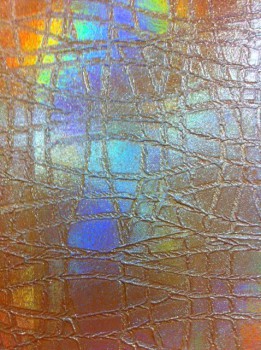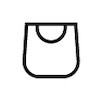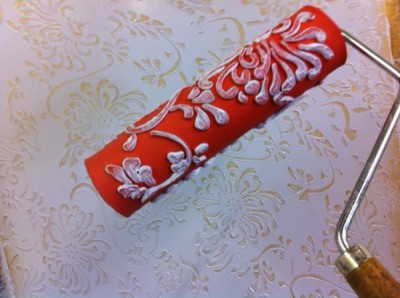
Pattern rollers have been around for a long time and I played with them a few years back, but never embraced their possibilities. Over the last year or so, I started looking for these rollers once again and have been playing around with the different textures that I can create with and how FUN they are to incorporate in my decorative painting.
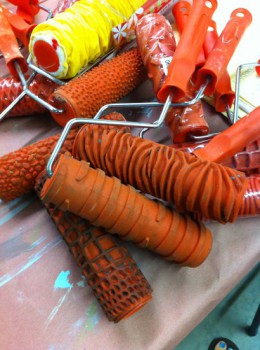
I have been posting on Facebook over the past several months, showing the different roller patterns/textures I have found and have been using in my decorative painting. My friends/followers have been asking many questions about using them in decorative painting and I thought it would be fun to address these concerns/questions/issues in a blog post…….hopefully I answer everyone’s questions – but if not, please feel free to post questions here!!!

To start with – there are many different patterns and textured rollers available to work with and I have found that I can just about roller through any texture material (all the products I use are made by Proceed by Golden or Modern Masters). The texture materials that are a little more heavy bodied, like Smooth Absorbent Texture (Proceed by Golden) is a little easier to work with than a “slick” texture like Smooth Translucent Texture…….the roller can possibly slide, instead of roll through these textures. But you can always mix the two of these products together and make a “new” wonderful texture material to play with (that’s a hint – love them mixed together – 50/50)!!
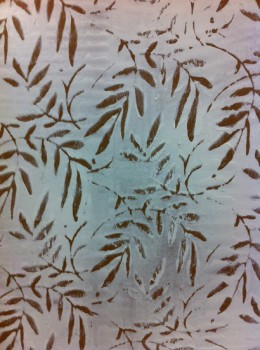
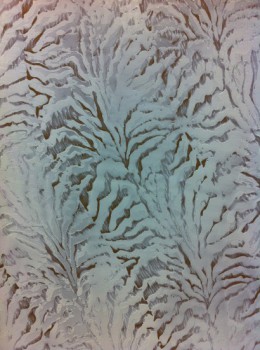
But, with a little practice and playing around – you can work with any texture material and may discover you end up with a favorite texture or two!!!
When working in different texture materials – I use my Japanese trowel to apply the texture to the surface, working in sections 2 to 3 feet wide and ceiling to floor if possible (depending on the open-time of the material you are working with). Once the texture has been applied to the surface, it helps to “wet” the roller in a bucket of water and then roll through the texture – you can clean the roller off in the water bucket to prevent the roller from getting loaded with too much material (I even learned this trick recently and love it).
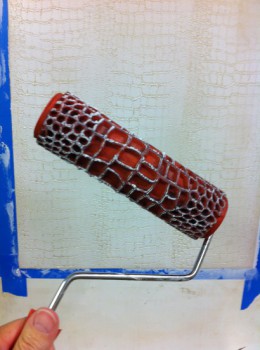
There are many different patterns to choose from (www.artisticpaintingstudio.com/shop/tools/rollers/) – the patterns can be rolled vertically – horizontally – create stripes or random application – you are the artistic creator with these rollers and there really are not any rules!
One question I have been asked over and over: How do you handle corners, crown molding and baseboards? There are several options to handle all these areas.
1st option: There is a tool that has a rubber tip and you can uses this tool to hand carve the pattern into the areas that the roller is not reaching or continuing to print.

2nd option: Purchase two rollers – cut one off the roller and use this as a stamp to print the pattern into the hard to reach areas.
3rd option: Be creative in the layout of your design – you could always frame a wall, leaving a border all around the pattern roller – creating more interest to the design.
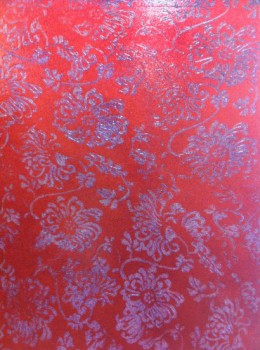
You will find that the rollers will “peak” up the edges of the material as you roll through it – which will require some sanding once it is dry. Sand the surface using 150 to 250 grit sandpaper to remove the “high pecks” if necessary. Complete the finish using your creative juices – using foils, glass beads, glaze, optional plasters, etc.
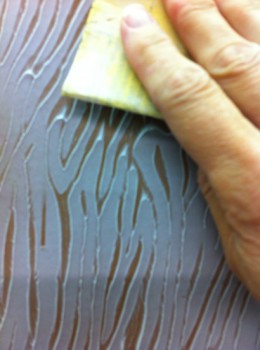
So far I have discussed all negative options for working with these rollers but you can also create a positive effect by rolling into paint and rolling the design onto a painted wall/surface.
I love working with them on furniture – drawer fronts are wonderful to work on and no issues of corners/etc.
From floral to animal skins – there are many pattern options to work with and the possibilities are endless…..I have been playing for many months and feel I have not even scratched the surface of options. You can order these on line for Art Rollers – they range in price from $12.95 to $20.95 for the Rubber style rollers and $49.95 for the Shamie style rollers.

